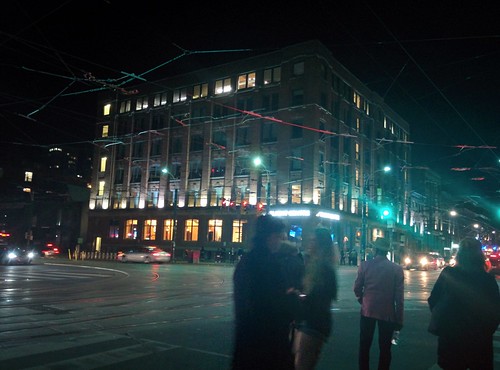- Jarek Piórkowski writes about how he can use his Presto card records to reconstruct, to varying degrees of fidelity, his commutes across the Greater Toronto Area.
- blogTO notes that the streetside bins of nuts and fruits of Salamanca Dry Foods Store in Kensington Market are no more, thanks to a new charge by the city.
- This paid section at the Toronto Star does a good job explaining the new planned Bjarke Ingels KING condominium complex on King Street West.
- CBC Toronto notes a new push by residents of the Beaches to encourage visitors (and locals) not to litter, on Woodbine or any other of the east-end's iconic strands.
- The Toronto Star reports on a community meeting regarding the redevelopment of Ontario Place, the different proposals all being united by a desire to keep this place a high-quality destination open to all Torontonians.
Earlier this month, I posted one photo from my visit to 533 King Street West in the heart of the Fashion District to see the Unzipped Toronto exhibition in Bjarke Ingels' reconstructed 2016 Serpentine Pavilion. I had promised to post the remainder of those photos later today. Consider that promise fulfilled today.
I quite enjoyed this free exhibit. The different projects displayed, of innovative architectural designs in a variety of North American and European cities including Toronto, were all eye-catching. Almost as of much interest was Ingels' remarkable design for the Serpentine Pavilion, an airy solid. (It was cold, granted, but that is what heaters were for.) This project's location in the heart of the dynamic Fashion District was well-chosen.

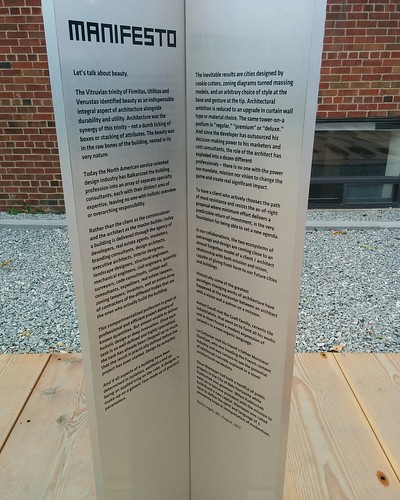
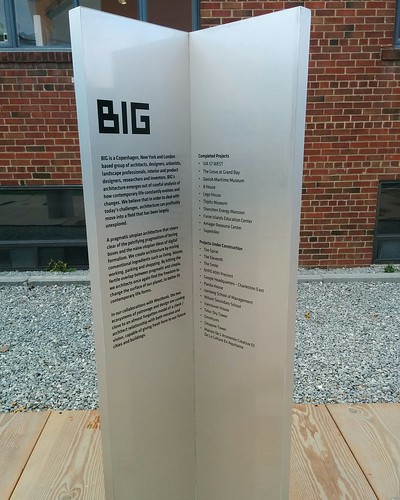

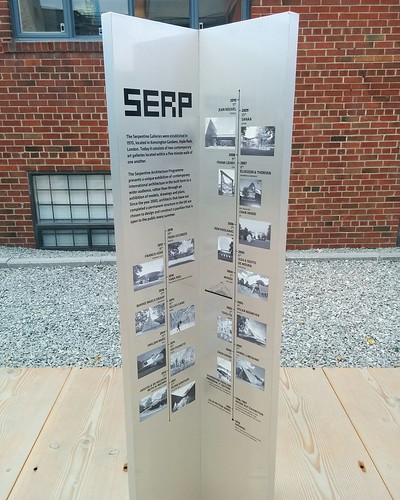
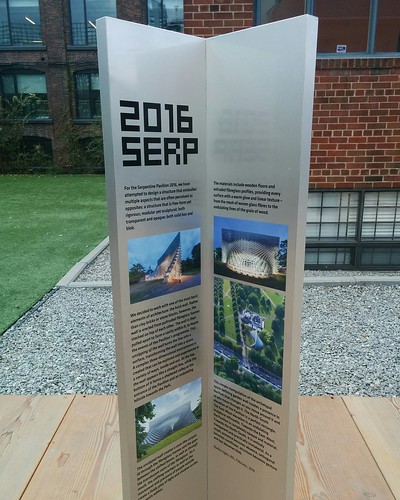














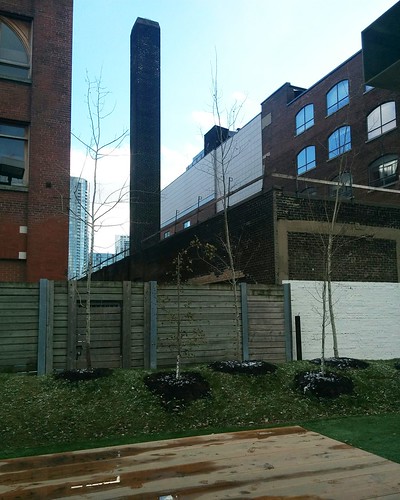
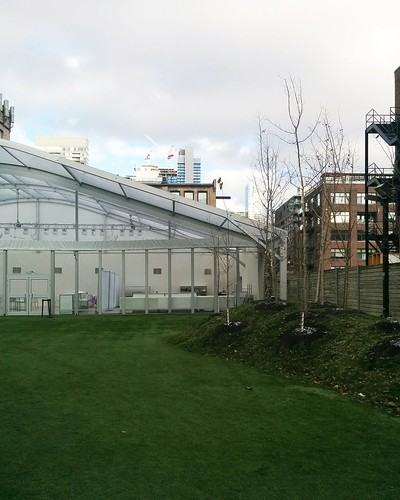

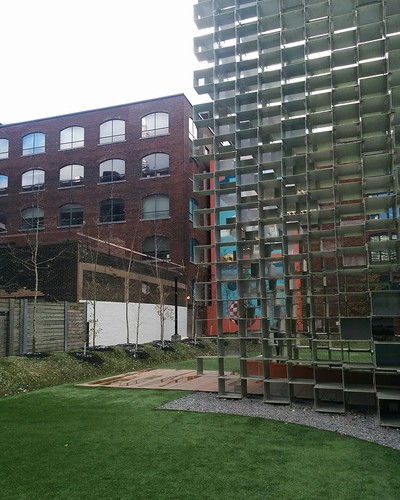

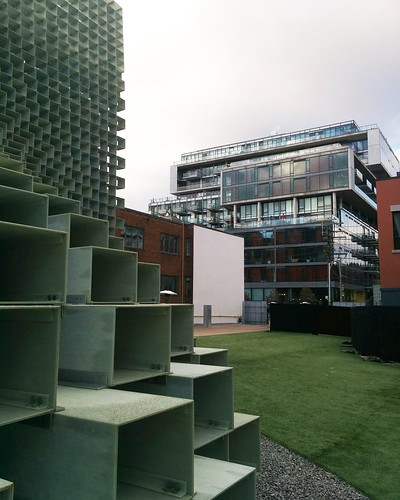





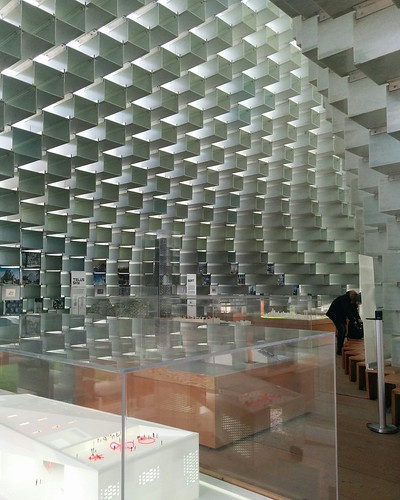
I quite enjoyed this free exhibit. The different projects displayed, of innovative architectural designs in a variety of North American and European cities including Toronto, were all eye-catching. Almost as of much interest was Ingels' remarkable design for the Serpentine Pavilion, an airy solid. (It was cold, granted, but that is what heaters were for.) This project's location in the heart of the dynamic Fashion District was well-chosen.
































Late last month, I went to 533 King Street West in the heart of the Fashion District to see the Unzipped Toronto exhibition in Bjarke Ingels' reconstructed 2016 Serpentine Pavilion. These photos will be posted later today. For now, enjoy this one photo of the skyline looking east from the grounds.


- Contrary to some stereotypes, the downtown is becoming less diverse in population while the inner suburbs are becoming more so. The Torotno Star reports.
- blogTO shares some pictures of what King West, now a glittering condo district, looked like back in the 1980s.
- Parkdale now has a new, if unsanctioned, safe injection site. CBC reports.
- The people behind the controversial Vegandale branding are now offering a hundred thousand dollars in funding to the community of Parkdale. The Toronto Star reports.
- Justin Ling warns at The Walrus that Torontonians should be prepared for a strong showing by alt-right propagandist Faith Goldy in the upcoming mayoral race.
The statue of the Virgin Mary standing by the corner of Parkdale's Holy Family Roman Catholic Church, at King and Close, stands hands open and illuminated in the night.


- Universiy of Toronto contract staff have voted overwhelmingly for a strike mandate. CBC reports.
- Wexford Plaza, an independent film centered around shopping guards at the Scarborough mall of the same name, has done well in Los Angeles and is set to open here in Toronto. blogTO reports.
- NOW Toronto notes a protest by Parkdale residents for affordable housing at King and Dufferin, where a massive new development is expected to rise.
- In response to the new $15 minimum wage, Metro is cutting service hours at some of its 23-hour grocery stores. blogTO reports.
- I sincerely hope that staffing shortages will not lead the TDSB to cut French immersion from its list of programs. The Toronto Star reports.
- John Lorinc at Spacing takes a look at how demographic change, including economic polarization, may influence the 2018 municipal elections in Toronto.
- Laurie Monsebraaten reports on the growing income polarization of different neighbourhoods and communities in Toronto, over at the Toronto Star.
- Liam Barrington-Bush discusses, at NOW Toronto, the possibility of a massive new development at King and Dufferin being the tipping point for the gentrification of wider Parkdale.
- Joe Mihevc shares with NOW Toronto some of his strategies for fighting poverty in Toronto.
- Steve Munro shares some vintage photos of TTC streetcars from Canada's centennial in 1967.
- Spacing Toronto's Chris Bateman describes how the Toronto Islands became a test-bed for architectural modernism.
- Global News notes the proposal for a hovercraft service across Lake Ontario, connecting Toronto with Niagara.
- The Toronto Star's Emily Mathieu notes that a Kensington Market apartment complex made into a ghost hotel has been temporarily shut down by Airbnb.
- NOW Toronto's Paul Salvatori has a touching photo essay on the Palace Arms, a soon-to-be-gone rooming house at King and Strachan.
blogTO's Derek Flack describes what I think is another very worthwhile initiative in Liberty Village.
There is more, including a map, at blogTO.
One of Toronto's most congested neighbourhoods for traffic might get some much needed relief as plans for a new street in Liberty Village have received support from city staff. A recommendation to add the street to the city's Official Plan goes to a vote at Toronto and East York Community Council on November 15, where it is expected to pass.
According to the report, the new street is proposed as an "east-west pedestrian, cycling, and vehicle connection between Dufferin Street and Strachan Avenue, linking to several existing north-south streets in Liberty Village. [It] comprises two lanes of vehicular travel, a sidewalk on the north side, a multi-use pedestrian and cycling path on the south side, and associated public realm improvements."
Plans for the new thoroughfare have been around for a long time, going all the way back to a proposed extension to Front St., which was ultimately shot down in part due to funding issues and concerns expressed by Parkdale residents worried about traffic dispersing at Dufferin St.
In place of that major project, what's merely referred to as "New Street" would address some of the problems organic to Liberty Village by offering residents a new way to enter and exit the neighbourhood. It would also add cycling infrastructure that would help to connect routes from the west with the new Fort York bridge and Richmond/Adelaide lanes.
There is more, including a map, at blogTO.
blogTO reports on a King Street streetcar initiative I quite approve of.
Remember the plan to overhaul King Street? City staff want to make this main thoroughfare better for pedestrians, drivers and commuters who rely on the streetcar by giving it an extreme makeover.
One of the ideas is to make dedicated sections for a streetcar right of way and to reduce vehicular traffic on the street. King would be known as a "Transit Priority Street" according to the preliminary plans.
[. . .]
Public consultations for this pilot project are supposed to begin this winter. As previously reported, the pilot might come to fruition as early as spring 2017.
Shannon Martin's CBC report highlights an issue I'd not heard of before. I have some sympathy for Corktown residents and their noise complaints, but not nearly enough to think that ending the 514 Cherry streetcar route is anything like a good idea. blogTO has more discussion about the issue.
It can be almost impossible to find peace and quiet living downtown, but some Corktown residents say the screech from the recently installed 514 Cherry Streetcar is unbearable.
"It's become a form a torture for us," said Jason Mednick, standing at the corner of King Street East and Sumach Street. "Equivalent to waterboarding."
The 514 went into service in June. The TTC introduced the service to relieve crowding along the congested King streetcar route and to connect new residential developments in Corktown and the Distillery District with the rest of the transit system.
But Mednick says the noise was instant and alarming.
"About every 10 minutes or so, 20 hours a day, we listen to excessive screeching and squealing as they negotiate the turn," said Mednick.
The 514 runs along King Street and makes a sharp turn south at Sumach, heading to Cherry Street on its way to the newly-constructed streetcar loop across from the Distillery District. That tight turn is partially what's causing the sharp squealing sound that's irritating many residents.
In the Toronto Star, Jennifer Keesmat suggests that Torontonians might do well to look to the example of Australian metropolis Melbourne in finding a way to deal with gridlock on King Street.
Other cities around the world are rethinking their downtown surface transit streets and transforming them into complete streets that are more than just corridors for movement. They are creating iconic, vibrant and attractive streets with inviting public spaces that help make their cities more livable and economically competitive.
One such example is Melbourne, Australia, named the world’s most livable city for the fifth year in a row in 2015. In the mid 1990s, with the help of Danish architect Jan Gehl, the city embarked on an ambitious plan to revitalize its downtown by creating great public spaces that cultivate public life. Melbourne has come a long way in a short period of time, something I saw for myself on a recent trip Down Under.
The city recently adopted Walking Plan 2014-17, which sets out the next chapter in its quest for liveability and competitiveness. An important thrust of the plan is to create what are called ‘High-Mobility Streets’ on corridors served by trams (a.k.a.: streetcars). This type of street will have high frequency streetcars and priority bus services, with excellent pedestrian access to and around stops.
Swanston St. was one of the first streets transformed into a high-mobility street and preeminent civic space. Where once cars and streetcars competed for limited space in the right-of-way, today the street is shared only by streetcars, bikes and pedestrians. It functions as a high-frequency public transit corridor capable of carrying 5,000 passengers in approximately 50 streetcars each direction per hour: a capacity at the lower end of LRT performance.
Essential vehicle access for deliveries, property servicing and access to off-street parking is limited to certain times of the day using a permit system. Streetcar stops are universally accessible, with paving and curb design supporting safer cycling. High-quality streetscape materials across the entire right-of-way — such as bluestone paving, trees, street furniture and pedestrian-scale lighting — promote patio-style outdoor dining and active public life.
I quite enjoyed Sarah-Joyce Battersby's Toronto Star article noting the coalescence of King Street West's condo-dominated Liberty Village district into a true neighbourhood.
When Emily Runions moved to Liberty five years ago, she felt like the only mom in the village.
“We would go to the park and you would see the dogs going down the slide more than you would see the kids going down the slide,” said the 30-year-old.
Dogs still vastly outnumber the likes of Runions’ 8-year-old daughter but there are signs young families are setting up in the condo enclave.
A thriving maternity and children’s store, Love Me Do, opened three years ago. Mud outlines the sidewalks where impatient walkers manoeuvre around strollers. And the biggest sign?
“You actually do see kids in Liberty Village,” said Todd Hofley, president of the Liberty Village Residents Association. “If you go to brunch at the Brazen Head . . . you’ll see lots of families in there.”
Hofley, also the condo board president for Liberty Tower, has watched the number of children in his development go from zero to more than 40 in the past five years. Now more than 10 per cent of the units are home to children, ranging from babies to teenagers, he said.
First is Sean Marshall's "King Street: How the TTC can strike back against UberHop".
John Lorinc's "Why UberHop will help the TTC" is the article referenced.
On Friday, John Lornic made an interesting case that UberHop, the controversial new service launched by the San Francisco-based “ridesharing” business, is the kick in the behind that the TTC needs to take seriously the problem of getting across the downtown core.
Lornic makes an important point: UberHop will be susceptible to the same congestion that plagues the 504 King Streetcar, the TTC’s busiest surface route. The King car carries nearly 65,000 passengers a day, but congestion and overcrowded streetcars and shuttle buses along the line have made it difficult for commuters along the line. This is why private-sector alternatives, like the short-lived Line 6 shuttle bus, seem so appealing. Now Uber is giving the private jitney service a try, looking to fill a need in the marketplace for $5 a ride.
But there is a solution that the TTC has looked at and proposed — a King Street Transit Mall — but sunk by local opposition and City Council’s indifference. I wrote more about the idea on my blog.
Rapid residential growth, both east and west of the downtown core, have overloaded the 504 King Streetcar. With 64,600 daily riders, it’s the busiest surface route in the system. The city has done little to facilitate this highrise boom in neighbbourhoods such as Corktown and the Distillery District in the east, and CityPlace, Liberty Village, Niagara, and Queen/Gladstone in the west. Further west, the highrise condos built at Humber Bay Shores must either rely on a painfully slow and unreliable ride on the 501 Queen Streetcar, take an infrequent double-fare express bus, or ride a bus up to the Bloor Subway.
John Lorinc's "Why UberHop will help the TTC" is the article referenced.
When I look at the wonderfully clean map that Uber has provided for its new jitney service, it’s not hard to see how frustrated commuters from transit deserts like Liberty Village might be lulled into believing that the San Francisco sharing monster will solve their morning problems.
After all, the routes look like they could be drone flight paths, all converging on King and Bay.
But as the Uberati will soon discover, those shared cabs must navigate the same core streets that are already so clogged they have slowed transit service to a crawl.
What does Uber know that the TTC doesn’t know?
Nothing, really, except how to use its considerable marketing savvy to capitalize on turning point moments the TTC should ordinarily have to itself, such as the introduction last week of the proof-of-payment rear door access on streetcars (this isn’t the first time Uber has piggy-backed on transit news to market itself).
Vanessa Lu's Toronto Star article is profoundly unsurprising.
The Toronto Transit Commission is asking its legal department to look into the new UberHop service, offering $5 flat rates for commuters on four routes during weekday rush hours, and see if violates the TTC’s monopoly.
“We’ll have our lawyers have a look at this business model, and determine whether it is in contravention of the City of Toronto Act or not, and go from there,” said TTC spokesman Brad Ross.
The legislation gives the TTC the right to operate all public transportation services, with a few exceptions such as tour buses, school buses and free shuttle services.
Tracey Cook, the city’s head of municipal licensing and standards, added the city is also reviewing UberHop’s operations for compliance with existing legislation.
Uber is launching its latest service Tuesday, where up to six commuters from Liberty Village, Fort York, City Place and the Distillery District can take an Uber SUV or minivan to go downtown during morning rush hour and back home in the evening.
The Transit Toronto Blog's Robert Mackenzie notes that Uber is now coordinating a shuttle service along four downtown routes, supplementing the King Street lines.
As Mackenzie notes, this shuttle service may fail like at least one other, on account of violating the TTC's Monopoly.
Uber, the on-demand ride-sharing app that’s already shaking up — for better or for worse — the Toronto taxi industry, launches a new service to bolster public transit services tomorrow, Tuesday, December 15.
UberHOP drivers use larger vehicles to pick up multiple riders from a common starting point and drop them off at a common destination. While this sounds an awful lot like a bus or streetcar operating along a route, what’s significantly different about this service is its cost — $5 a ride, which, for many people, is also an awful lot.
The pilot project starts tomorrow along four downtown routes. For its first week of service, UberHOP passengers can ride for free. Starting next week, they’ll face full fares.
As Mackenzie notes, this shuttle service may fail like at least one other, on account of violating the TTC's Monopoly.
CBC reports on a crowd-funded effort to provide private bus transit for Liberty Village, to supplement an overcrowded 504 King streetcar.
I do not think this is good. More funding for the booming downtown core is needed, clearly.
I do not think this is good. More funding for the booming downtown core is needed, clearly.
Liberty Village residents tired of trying to squeeze their way aboard the jam-packed 504 King streetcar each morning might want to send Taylor Scollon an email. And a cheque for $25.
In a move to alleviate the cattle-car conditions transit riders in the west-end neighbourhood endure almost daily, Scollon has co-founded a service that will attempt to operate — at least on a trial basis — a private, crowd-funded bus service with daily trips into downtown during rush hour from the fast-growing neighbourhood along King Street West.
"We're trying to empower people in communities where maybe they feel under-served by transit," said Scollon who calls the concept Line 6, in an interview with CBC Radio's Metro Morning. "They just don't have the transportation options that they need or want. We're trying to empower those people to build better transit themselves."
Here's how it will work. For a minimum donation of $25, riders are guaranteed five seats on the bus. Scollon's company will charter the bus using a private company. Line 6 has a $2,500 funding goal before they will launch the pilot. So far, they have raised $1,450.
Liberty Village has seen massive growth in recent years as condos have popped up in the area that was once home to factories and other industries. City services, transit in particular, haven't adjusted to keep up with the growing neighbourhood's needs.
"There's a lot of people trying to get to work every morning and the public transit options are just not efficient to handle that capacity," said Scollon. "We see this as an under-served community."
